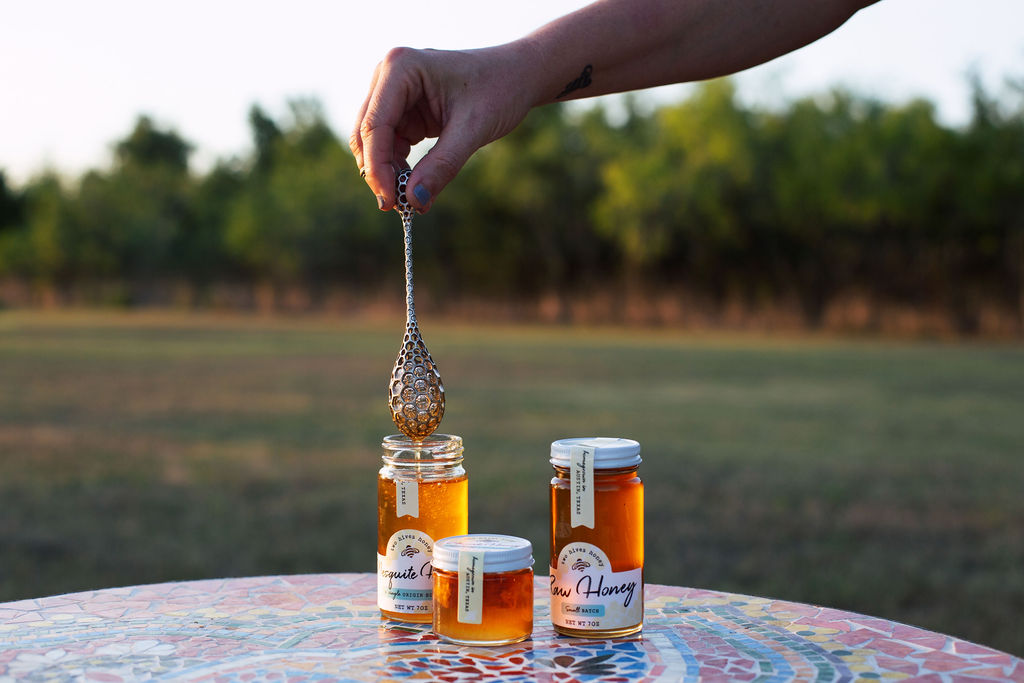How do Bees Make Honey?

| It’s more complicated than you think!! There are a lot of misconceptions, even amongst beekeepers, about how honey is made. (And no, its NOT made from pollen!). There’s a whole lot more to it than most folks realize. Adult honey bees are fantastic little energy machines that exist almost exclusively on carbohydrates. And where do those carbs come from? Older bees’ primary nutrition source is the sugars obtained from flower nectar, which is then made into honey. Foraging bees will visit a flower, and draw up nectar with their long tongue, called a proboscis. These flowers produce nectar only to attract pollinators. It provides no other function for the plant. This proboscis, approximately 7mm in length (0.28 inches) has two ‘settings’: a lapping setting and a suction setting. Interestingly, they will switch between these two modes based on the viscosity of the nectar. A lower viscosity nectar calls for sucking, whereas a higher viscosity nectar can only be obtained through lapping. Imagine a really thick milkshake— a thick milkshake requires a spoon, whereas you can get by with a straw with a thinner milkshake. The bee will store this nectar in a second stomach, called a honey crop. This honey crop acts as a storage container to carry the nectar back to the hive. A small flap separates the honey crop from the bee’s own digestive stomach. This flap can allow small amounts of nectar to pass through to help provide energy to the bee during flight. It can even grind down and filter pollen out of the nectar to keep it out of their digestive tracts. The processing of nectar actually starts here, in the honey crop, as enzymes are added. Once back at the hive, the foraging bee passes the nectar via regurgitation to receiving bees that will deposit the nectar in beeswax cells through their own regurgitation. It’s important to note that bees do not have access to nectar year round. Depending on the climate and grow season, the bees may only be able to make honey 6-8 weeks out of the year. The period of time that bees have access to enough nectar that they can begin to store it as honey is what’s called a honey flow, or nectar flow. During a nectar flow, honey bees act as phenomenal little hoarding machines, as they have to be able to collect enough nectar to feed the colony for many months. But nectar has a definitive shelf life. Despite that it’s often almost half sugar, the remainder of the makeup of the nectar is water. And this presence of water provides an environment for fermentation to occur. Honey bees will not consume fermented nectar. So they have to process the honey in a way that creates a product that is “shelf-stable.” This product is what we know as honey. Honey bees must dehydrate the nectar so that its water content is 18.5% or less. These receiving bees do this one of two ways: by holding a drop of nectar in their mouthparts until it is dehydrated or fanning the combs containing nectar. Remember that honey bees can control temperature and humidity in their hive, and this skill set is critical for dehydrating the honey. Honey is what is called hygroscopic, which means when exposed to air, it draws moisture from the air. Therefore, once the nectar is ripened into honey and the moisture level is 18.5% or less, the bees place a thin layer of beeswax over the top of the honey to prevent exposure to air. This process allows the bees to store this food that can be consumed for many months or even years. And that, my friends, is why your honey has such a long shelf life. |
| Ready to try the best damn honey Texas honey bees can make? Be sure to check out our online shop to peruse our raw honey and honey gift sets! |



Leave a Reply